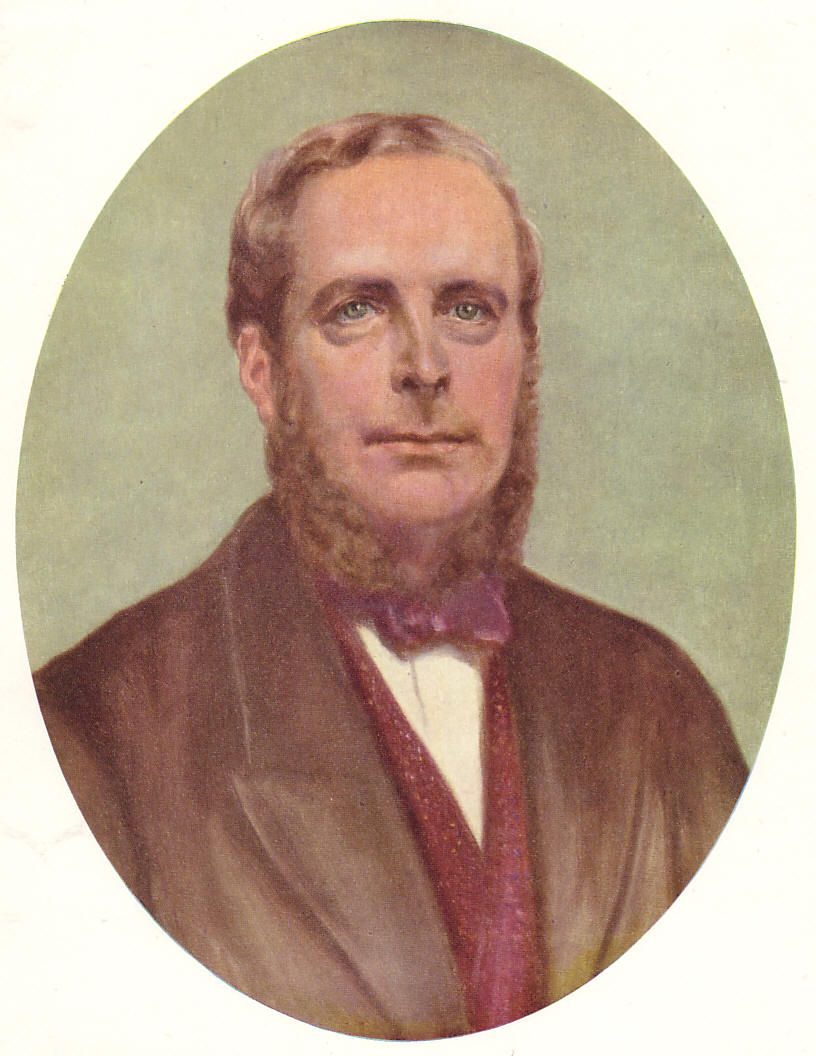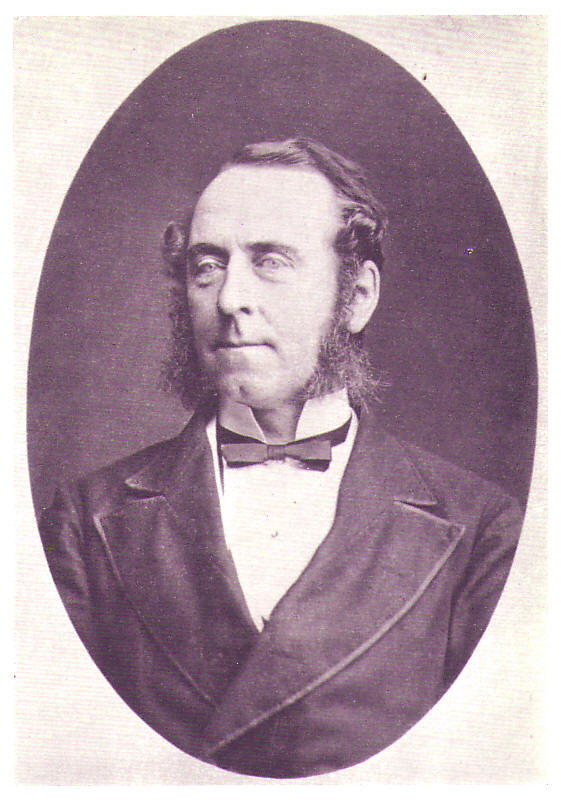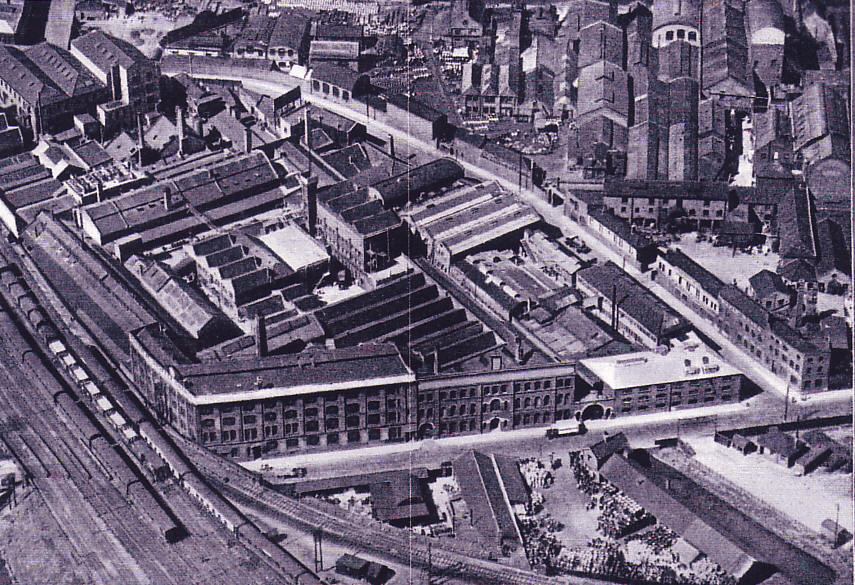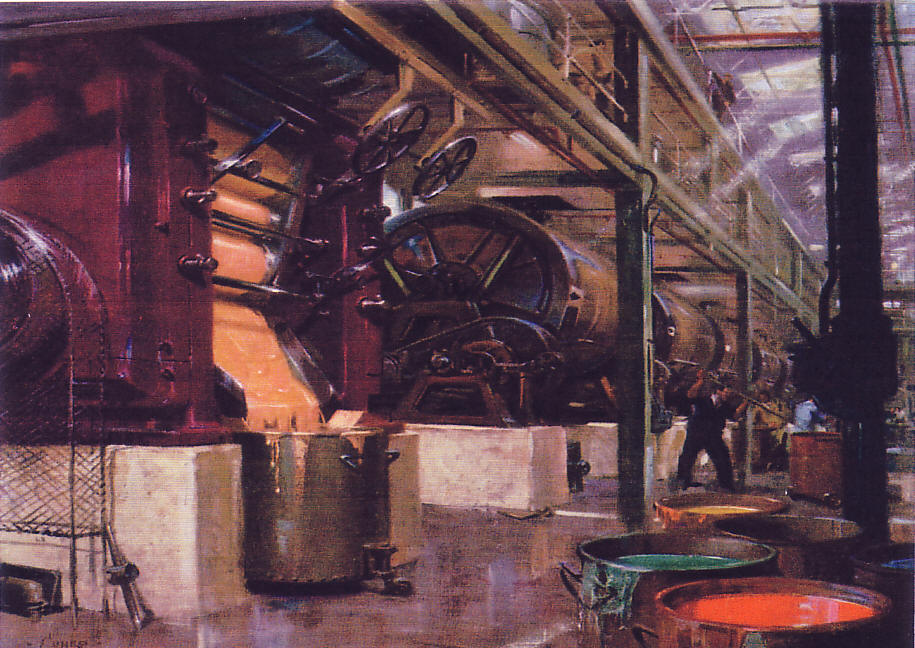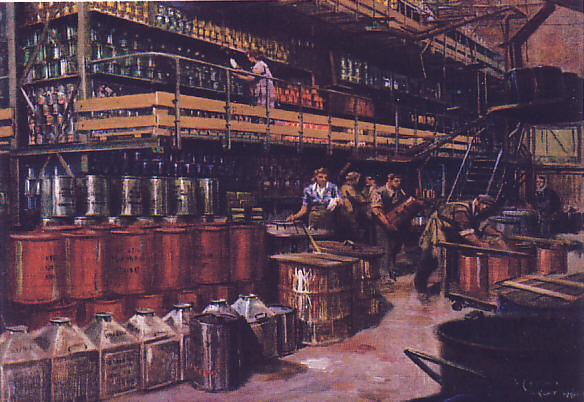|
|
|
|
|
|
|
|
|
|
|
|
|
|
|
The History and Origins of the Old Paint Company ~ Jenson & Nicholson |
||||||||||
|
|
|
|
|
|
|
|
|||||
|
|
|
|
|
|
|
|
|
|
|
|
|
|
|
|
|
Jenson & Nicholson |
|
|
|
|
|
|
|
|
|
|
|
|
In 1821 a
business was started by William Kingham, a craftsman specialising in carriage
varnishing. The premises were at number 37, Barbican, in the city of |
|
|
|
|||||
|
|
|
|
|
|
|
|
|||||
|
|
|
|
Wilfred Nicholson started his commercial career with Grace Yallop & Co whose main business was in the manufacture of white lead from a factory in Bethnal Green. His first job with Grace Yallop was as a mercantile clerk and he rose to the rank of commercial traveller. It was through this aspect of his work he made contact with John Jenson. |
|
|
|
|||||
|
|
|
|
|
|
|
|
|
|
|
|
|
|
|
|
|
Running the business single-handedly proved a tremendous strain on John Jenson. According the Wilfred Nicholson's grandson ~Harry Kimber who wrote Wilfred Nicholson biography, it was John Jenson's wife Harriet, who first mooted the idea of a partnership between John Jenson and Wilfred Nicholson. The partnership was a legal entity by 1861 |
|
|
|
|||||
|
|
|
|
|
|
|
|
|
|
|
||
|
|
|
|
John Jenson ~ from a painting |
|
|
Wilfred Nicholson |
|
|
|
||
|
|
|
|
|
|
|
|
|||||
|
|
|
|
In 1861 Wilfred Nicholson joined the business and the manufacturing site moved to Belle Isle, just north of of what is now Kings Cross station. The name Belle Isle is something of a misnomer. It was an awful area with a host of factories ranging from bone boiling/glue manufacturing, candle making, varnish manufacturing, match makers, pigment manufacture through to bronze smelting. The factories were cheek to jowl with domestic dwellings. |
|
|
|
|||||
|
|
|
|
In November 2008 we received an e-mail from
a Mr Taylor, whose mother had worked for Bernard Nicholson. It was a small
ledger dated 1861 thro’ to 1868 and covered expanses and stock-taking
summaries. It was signed by John Jenson ~ see below: |
|
|
|
|||||
|
|
|
|
|
|
|
|
|||||
|
|
|
|
In 1871,
fire swept the premises and the company restarted the production in |
|
|
|
|||||
|
|
|
|
|
|
|
|
|||||
|
|
|
|
Jenson & Nicholson factory circa 1929 |
|
|
|
|||||
|
|
|
|
In 1874,
Jenson retired, but the name Jenson and Nicholson was retained ~ usually
referred to simply as "J & N's". The company was beginning to develop
a strong industrial base. In 1922 the company expand through, what was the
Commonwealth. Like many paint companies during the second world war, the
business moved into different areas producing everything from lacquers for
barrage balloon fabrics to special varnish treated silk bags and used in
hospitals to treat burns. In 1946 the artist Terence Cuneo was commissioned
to produce paintings and sketches of the factory at |
|
|
|
|||||
|
|
|
|
|
|
|
|
|||||
|
|
|
|
a |
|
|
|
|||||
|
|
|
|
|
|
|
|
|
|
|
|
|
|
|
|
|
|
|
|
|
|||||
|
|
|
|
a section of a |
|
|
|
|||||
|
|
|
|
The
company continued to expand after the second world war with overseas
companies and the merger with John Hall & Sons of |
|
|
|
|||||
|
|
|
|
Although
the name Jenson & Nicholson has gone with various mergers and
acquisitions, there still exists in |
|
|
|
|||||
|
|
|
|
|
|
|
|
|
|
|
|
|
|
|
|
|
|
|
|
|
|
|
|
|
|
|
|
|
Additional information to the history of Jenson & Nicholson is most welcome. There are at least
two paintings by Terence |
|
|
|
||||||
|
|
|
|
|
|
|
|
|
|
|
|
|
|
|
|
The |
|
|
|
||||||
|
|
|
|
|
|
|
|
|
|
|
|
|
